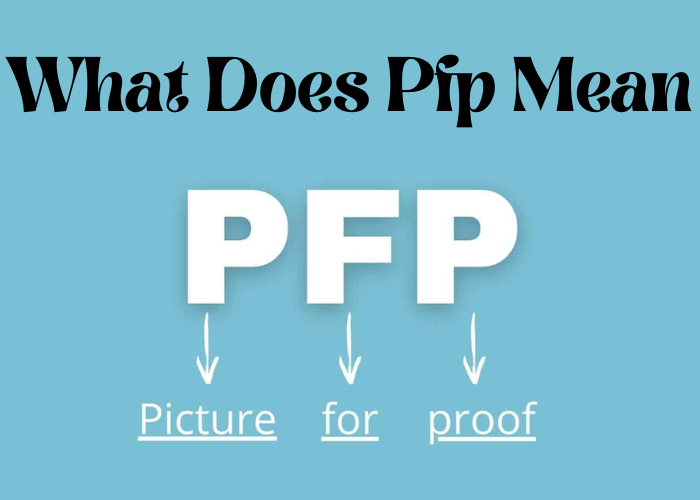Are you scratching your head, wondering what does pfp mean? Don’t worry, you are not alone! In this blog post, we’ll be exploring the definition of pfp and understanding how it fits into our digital world. Whether you’re hearing the term for first time or if have some experience with the phrase but want to know more, stay tuned as we break down its meaning and discuss why it matters.
What Is Pfp
Pfp stands for “pay for performance”, which is a compensation plan used by businesses and organizations to incentivize employees and leaders. In this system, an organization rewards positive job performance with monetary incentives. It encourages and motivates employees to work hard and build increasingly impressive results over time. This system is also advantageous because it allows an organization to better measure the value of what each individual employee brings to the company, while giving them appropriate recognition in a competitive job market. Ultimately, what does pfp mean? It represents a different approach to rewarding individuals for their hard work that can prove to be beneficial for both employers and vendors alike.
What Are the Benefits of Pfp
PFP stands for “performance-focused planning,” and is a process used to identify what steps need to be taken in order to reach a goal. It involves setting out specific objectives with achievable action plans, enabling organizations to track progress as they strive towards their goal. By employing PFP, companies can focus on what will make the biggest difference or bring the highest return on investment. This leads to optimized performance outcomes that keep costs efficient and allow progress to be made effectively. Ultimately, PFP helps businesses reduce uncertainty, create a streamlined organization, enhance processes, and avoid risks in overall operations, all of which are essential components for any successful organization.
How Does Pfp Work
What does PFP mean? PFP stands for Professional Financial Planning. It is a methodology used to help individuals create and meet their financial goals over the short and long term. The process includes establishing current financial objectives and understanding life’s expected changes. It takes into account what resources one currently has, what strategies can be put in place to reach those financial goals, what risks may need to be taken, what insurance coverage should be obtained, what investment options are available and what specific techniques should be employed. Professional Financial Planners have the expertise to evaluate an individual’s current status and what measures must be taken so that his or her financial dreams become reality.
Who Should Use Pfp
Pfp stands for “Payment Facilitator Platform” and is a payment solution for businesses who are seeking cost-effective, secure, and feature-rich payment solutions. The platform provides online billing, subscriptions management, credit card processing, merchant account integration, fraud detection services and more. By leveraging the powerful technology of Pfp, small businesses can streamline their operations while reducing costs associated with vendor payments and customer transactions. In addition to the advantages of using its software program and features, entrepreneurs will also benefit from its user-friendly interface which allows them to easily customize the system according to their needs. Therefore, Pfp is an ideal choice for any business looking to simplify their payment processing and maximize efficiency.
How to Get Started With Pfp
If you’ve found yourself wondering what the acronym “Pfp” stands for, you’re not alone. Pfp stands for “Program Fee Payment”, and is the process of paying a fee to access certain services or memberships from an organization or business. Getting started with Pfp can seem daunting at first, but following a few simple steps can make the process quick and easy. First, research what services are offered by the organization that uses Program Fee Payments so you know what to expect when enrolling in their program.
Next, figure out what type of payment is accepted; typically organizations offer several payment methods including credit cards and electronic checks. Lastly, register for program to start taking advantage of the services it provides! With this understanding of what Pfp means and what steps to take to get started, you’ll be well on your way to using this convenient way of paying fees.
Conclusion
Pfp stands for “pay for performance.” In a pay-for-performance agreement, an organization contracts with another party to provide goods or services, and then pays that party based on the results of their work. This type of arrangement is often used in marketing, where an agency may be paid based on the number of new customers they bring in. Pay-for-performance can also be used in other contexts, such as when a company contracts with a consultant to improve its sales figures.








Leave a Comment